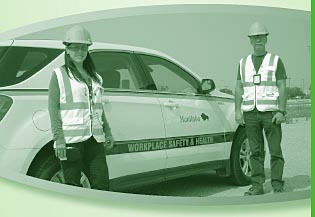Labour - Workplace, Safety & Health
FAQs: Students as Workers
When is a student a worker?
A student is a worker when the student is enrolled in a vocational school or a technical college. For example, a student learning curriculum that is geared towards a trade (such as machinery, carpentry, automotive) would be considered a worker.
A student is not a worker when the student is a regular elementary or high school student attending a non-vocational institution. For example, a student learning a life skill (such as sewing, cooking, woodworking) at a non-vocational high school would not be worker.
Other considerations:
- The question of when a student is a worker arises most often in determining whether a serious incident must be reported to the Workplace Safety and Health Branch (WSHB).
- Under s. 2.7(1) of the Workplace Safety and Health Regulation, WSHB must be notified when a serious incident occurs.
- Under s. 2.6 of the Workplace Safety and Health Regulation, “serious incident” is defined: the first two parts of the definition refer to “a worker”; the third part refers to certain events such as a building collapse, explosion, fire, flood, etc.
- Under s. 2.9(1) of the Workplace Safety and Health Regulation, an employer must ensure that the following are investigated as soon as reasonably practicable: a serious incident, an accident or other dangerous occurrence that injured a “person”, and resulted in the “person requiring medical treatment”, or an accident or dangerous occurrence that had the potential to cause a serious incident.
- Therefore, an incident involving a student may not be reportable to WSHB under ss. 2.6 and 2.7, but may still need to be investigated under s. 2.9.
- Employer and worker duties
- Regardless of whether the student is a worker or not, s. 4(2)(d) of The Workplace Safety and Health Act requires an employer to ensure, as far as reasonably practicable, that “persons who are not in his service are not exposed to risks to their safety or health arising out of, or in connection with activities” in the workplace.
- In addition, s. 5 of The Workplace Safety and Health Act requires workers to take reasonable care to protect their safety and health “and the safety and health of other persons” who may be affected by their acts or omissions at work.
- “Other persons” in these sections would include students. Both employers and workers (i.e. teachers in this context) are therefore required to protect the safety and health of students.
 |
Contact the Workplace Safety & Health Branch Phone: 204-957-SAFE (7233) |


